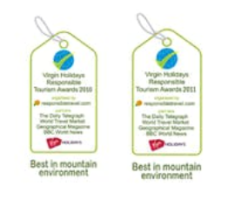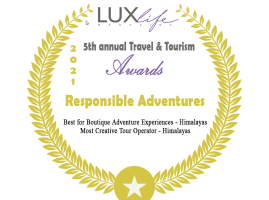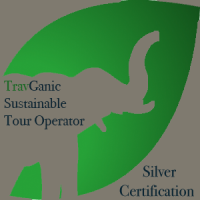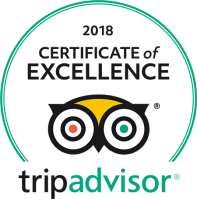Attending a wedding in remote Nepal
We recently concluded a trek to remote Sotang Village Municipality’s village to attend and financially support the wedding of our dear and longest-serving staff Chandra and his bride Manku Rai. We had planned it so our previous and new customers could experience cultural immersion by attending a wedding in Real Nepal ? away from the touristy places 99% of the visitors to Nepal go to.
The whole wedding experience was planned for a week. The joining date of the trip coincided with Valentine’s Day. We had four overseas participants ? an Australian couple who have done two treks with Chandra; two Singaporeans ? one who has done several treks with the groom, and the other who has made three trips with us.
The Journey to the Wedding.
We had a long drive towards Salleri on the second day. We drove on a winding road along the Sun Koshi River until we reached Harkapur of Okhadhunga district, where we started ascending. Despite the relatively short distance and good road conditions, it took us longer than expected. Being stuck for forty-five minutes in a traffic jam in Kathmandu didn’t help. We had a team discussion and decided to stay at Patale for the night. Upon reaching Patale, we checked out the rooms, which were basic but neat and clean; we ordered some refreshing black tea and Dal bhat (Nepalese staple diet) for dinner. It was a cold but clear night at 2875 meters, with stars shining brightly as there were no light disturbances. We had an early night so we could have an early start.
The following day was clear, and we took the wedding participants for a surprise view of Mount Everest and other giant Himalayan Peaks before breakfast. After that, we headed for Salleri, the district administrative centre for Solu Khumbu district; the jeep got refuelled. We left the blacktopped road a short distance after refuelling, and the bone-wrenching journey to Sotang began. However, the scenery made the rough drive somewhat bearable. It took us about three hours to reach the Dudh Koshi River before the last leg to Sotang Bazaar. The River was only made possible to cross from the previous winter with a temporary “bridge” built over it. The final 5 km was the most challenging part of the journey, where some passengers had to descend at a few places so the jeep could manoeuvre over steep dirt road sections. The 5km drive took us ninety minutes. Once we reached Sotang Bazaar, we went to our staff Sundar’s “hotel” to have our preordered lunch while our seven porters were busy offloading our camping gear from the jeep and divided it into equal loads.
We had a two and half hour hike to Majh Kharka ? the groom’s village. The walk was relatively comfortable, with a small ascend for about forty-five minutes to the top of the hill. The trail then became short descents, undulating before we started a short climb to the groom’s home. Chandra eagerly awaited our arrival; his family members warmly welcomed us. Our porters arrived shortly after us; they and our support team got busy setting up our tents on the local “Youth Club grounds.” We were invited to dinner with the groom’s family, as they were ‘free’ before the wedding rush began the following day. Once our campsite was ready, we set our respective tents up and got ready for the evening.

The Rai ethnic group and their traditions
Chandra belongs to the Kirat ethnic group of the Rai and Limbu communities, with numerous clans and sub-clans. The Kirats are some of the first recorded people to have ruled Kathmandu in Nepal’s history. They practice a mixture of ancient animistic religions worshipping the forests, rocks, rivers, and everything to do with nature and some Hindu rituals. The most important part of their diet is pork ? every household rears a pig for special occasions. They also love their alcoholic drinks, namely Chang ? fermented grains, but millet is their grain of choice, which they drink instead of water and Rakshi ? distilled homemade liquor from fermented millet. Alcohol is consumed in all their essential rituals.
Pre-wedding family dinner
We went into the ‘kitchen’ of the family, where a fireplace is set in the middle with four poles on each corner ? an essential part of the Rai ethnic group’s traditions. Unique places are set for the elders according to their importance in the family. We were invited to sit with the family members and were served Rakshi ? their homemade liquor. Culture and traditions were explained to the guests. It appeared that their weddings were very well organized with various chores/duties assigned to a different set of people ? mostly all relatives. It starts with a guy who estimates the whole wedding budget; I jokingly called him the CFO, a team each for making Chang, Rakshi, purchasing, cooking, the sisters and female cousins were in charge or serving alcohol to all present ? they made sure everyone had plenty. So we had plenty to drink and a good dinner of pork curry and rice. We went to bed feeling relaxed after the consumption of rakshi despite the bone-wrenching ride that morning.
Final preparation day
We were woken up with an ayurvedic drink delivered to our tents. This drink is excellent as it has anti-inflammatory properties, provides exceptional energy, and gets rid of cancerous cells. One of our host’s cousins had kindly invited us for breakfast.
The morning activities consisted of going for breakfast, having tea with another of our host’s cousins, and visiting the local school to watch a pig’s ritual killing before lunch. Our overseas guests were treated to an excellent and healthy meal prepared by our trekking chefs while we went for lunch at a relative’s home. The villagers are so hospitable and accommodating. We were invited to many of their homes for tea and meals; sadly, we couldn’t visit every house that welcomed us.
The bride and her close male relatives arrived at the groom’s village, and the family members of each family sat by the fireplace in the kitchen of the groom’s house. They exchanged formalities that go with their tradition and culture. There was plenty of free-flowing alcohol, and soon the merrymaking started dancing in the courtyard. A bamboo pole was in the middle of the yard where people danced to traditional musicians’ music. We had dinner at our campsite and joined the merrymaking till late at night.

The bride’s village
We were part of the procession going to the bride’s village. The usual traditional rites were performed, and the wedding procession took place around 10 a.m. We had to descend on narrow trails and steps to the Inku River; we dropped about 450 meters and crossed the suspension bridge before the ascent began. We had to climb about 700 meters to reach the bride’s village. The bride’s family once again welcomed us warmly. The bride’s family brought us many bottles of Rakshi. We joined the celebrations after having dinner at our campsite. The usual elders from both families exchanged pleasantries inside the main house while other guests were dancing away in the courtyard. The dancing went on until the wee hours.
United Women’s Society, Hakula village, Waku, Solu Khumbu
We went to the premises and offices of the United Women’s Society at Hakula village after breakfast. They had prepared a reception program to show gratitude for the funds provided by yours genuinely two years back. Garlands of rhododendron flowers and silk scarves – Khata, were used to welcome us. This organization is progressive. They collect a monthly membership fee with which they bought the land for their office (still incomplete, the need to put windows, furniture, and build a toilet). In addition, they plan to buy a playground for the school, make more classrooms for their children, and help others in financial need.

Back to the groom’s village with the bride and the wedding procession
We had lunch before proceeding to witness the traditions of a Khaling Rai wedding. We realized that these ceremonies take longer than expected, so we, the visitors, decided to leave the bride’s village by 2 p.m. to avoid walking uphill in the dark to Majh Kharka. We reached the groom’s village around 5 p.m., changed into dry clothes, and had more rakshi brought to us by the groom’s relatives. The wedding procession arrived around 7 p.m., just after we had finished dinner at our campsite. It was a lovely sight with the lights and the traditional music being played; several rounds of musket guns were fired to announce the neighbouring village’s joyous celebrations.
We joined the celebrations with everyone. When the groom and bride were a little free, we brought over a unique wedding cake our trekking chefs had prepared. It was the first time a cake had been made for a wedding in this area. Everyone was ecstatic when the bride and groom cut the cake. This was our last night in this village, so we tried to go to bed early, but it was 1 a.m. before we went to bed while the celebrations continued.
Leaving Majh Kharka for Salleri
We had planned to leave by 8.30 a.m. his morning but knew that we would probably start by 10 a.m. at the earliest. So we got ready to move by 8.30 a.m. but were held up by the groom’s family members queuing up with Khata ? the silk scarf to bid us adieu. We were then asked to go to the house of Lakhman ? the CFO of the wedding, for a short time. We sat on the floor of his kitchen while his wife brought us a snack of free-range chicken, and his sons served us a beer glass full of rakshi. We were finally on our way back to Sotang, where we had booked the same jeep that brought us there for our return journey. Sundar ? my staff and I had a quick discussion and agreed to have lunch at his ‘hotel’ before starting our drive because of the delay. We arrived at Sotang and had lunch only to find our jeep was in Kathmandu for repairs. The vehicle was only five months old, but the rough road had broken it down. So we had to make alternate arrangements; after some haggling, we had to split into two groups. Jason Sharon and I were to go to Phaplu, where we would fly back to Kathmandu the next day. Chang, Yusuf, and two of my staff went towards Kathmandu on their two-day journey with our camping gear.
We arrived in Phaplu around 8.30 p.m. ? half an hour earlier than expected. Our rooms were booked when we got a phone signal on the way along with our dinner. We checked into the lodge, came out for dinner, and went to bed early as the journey had made us tired.
Back to Kathmandu
We got up, had breakfast, finished packing, and walked around Phaplu town the following day. Our flight was at, but we were told the weather in Kathmandu was foggy, which delayed the flight. We also learned that the weather had been bad for the past four days, which cancelled all flights; this morning looked promising with unobstructed views of Mount Numbur and blue skies. We finally heard our aircraft in the air around 1 p.m., which was a massive relief as it had gotten cloudy by then; this is one of the many Visual-only flights in the mountains of Nepal. We boarded the aircraft and were glad when the plane took off. It was cloudy on the way to Kathmandu, but the skilful pilots flew high to avoid the clouds and made it a relatively smooth flight. Sharon, Jason, and I agreed to meet up at 10.30 a.m. for their journey back home as they had a lot to get done on the last day in Kathmandu.
We met the following day as agreed and bade farewell before they left for the airport. Chang and Yusuf had a few more days in Kathmandu. We met on the day they went home for coffee and bade farewell with promises to make more trips together in the future.
















